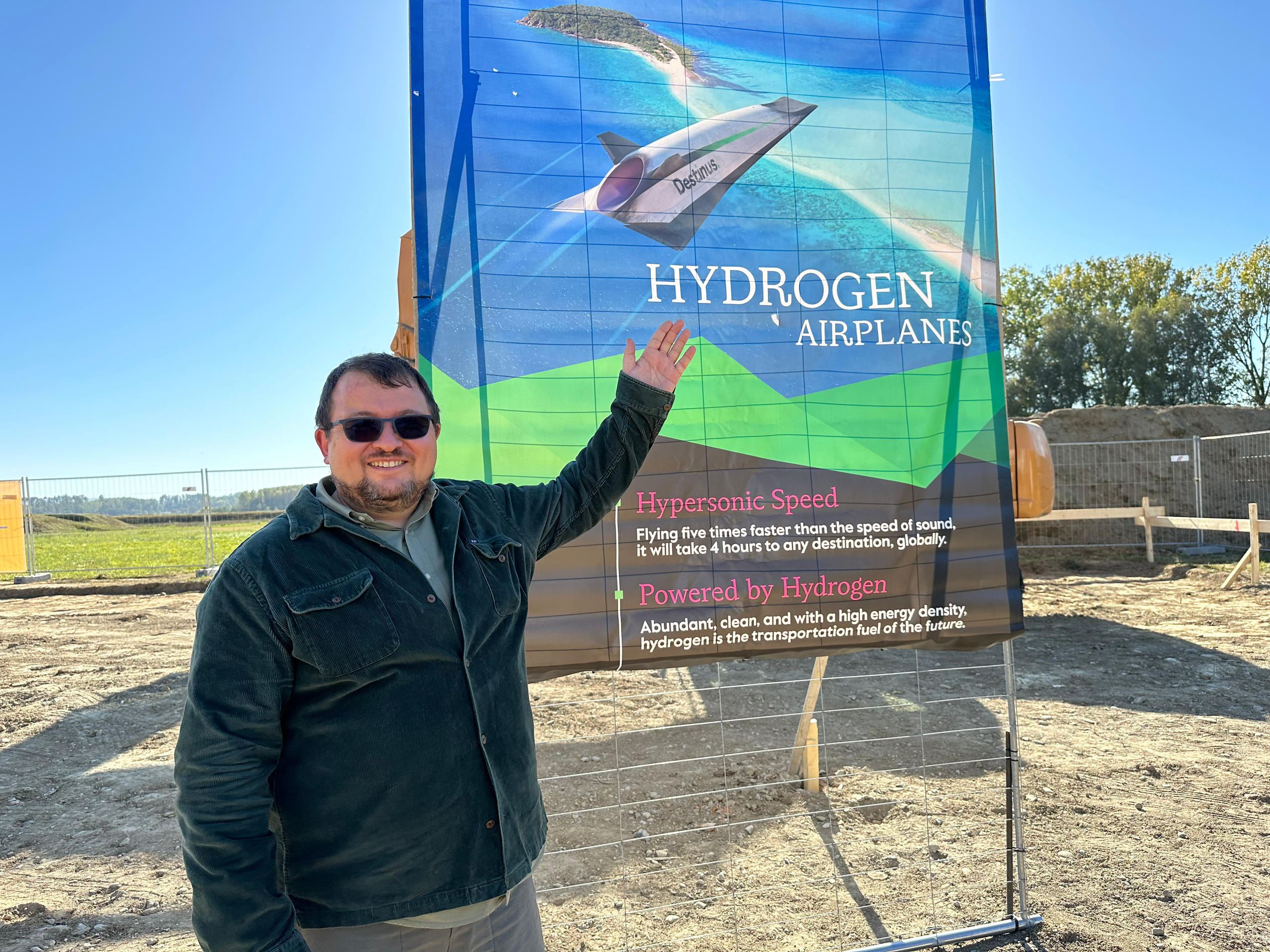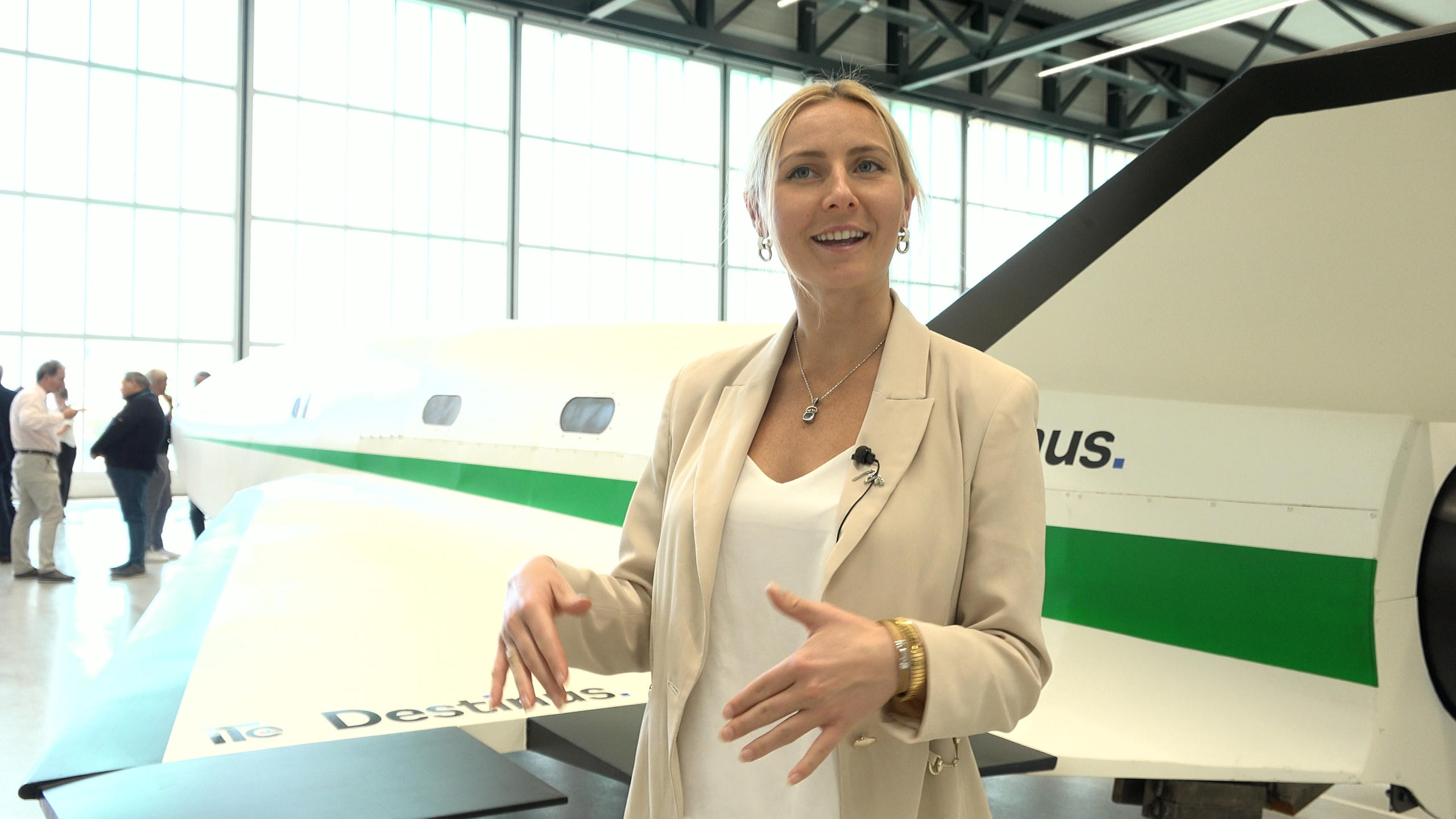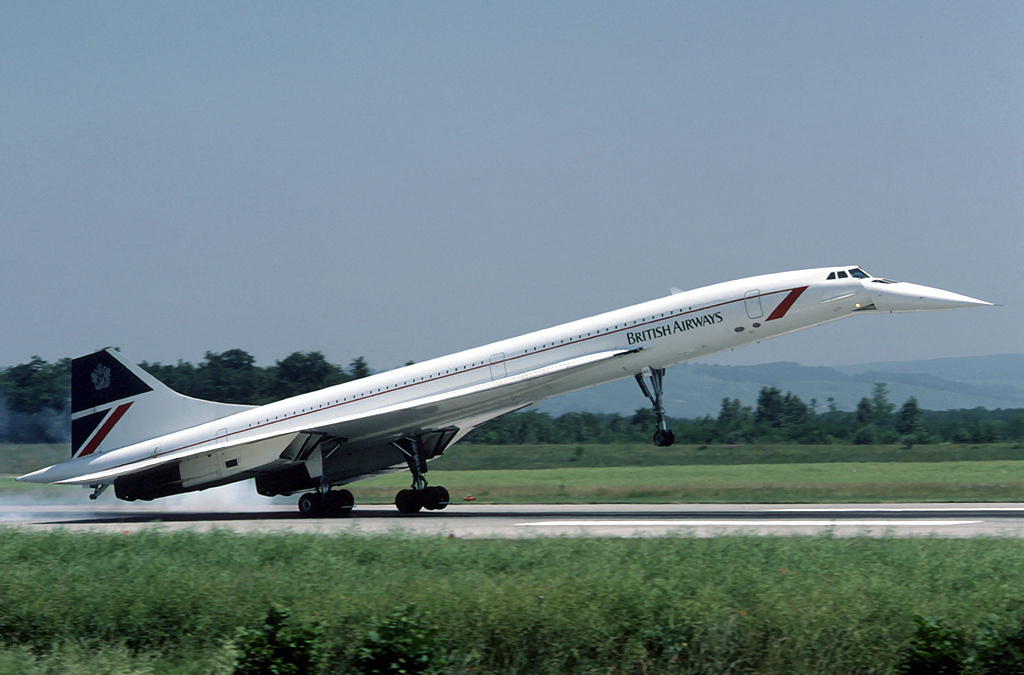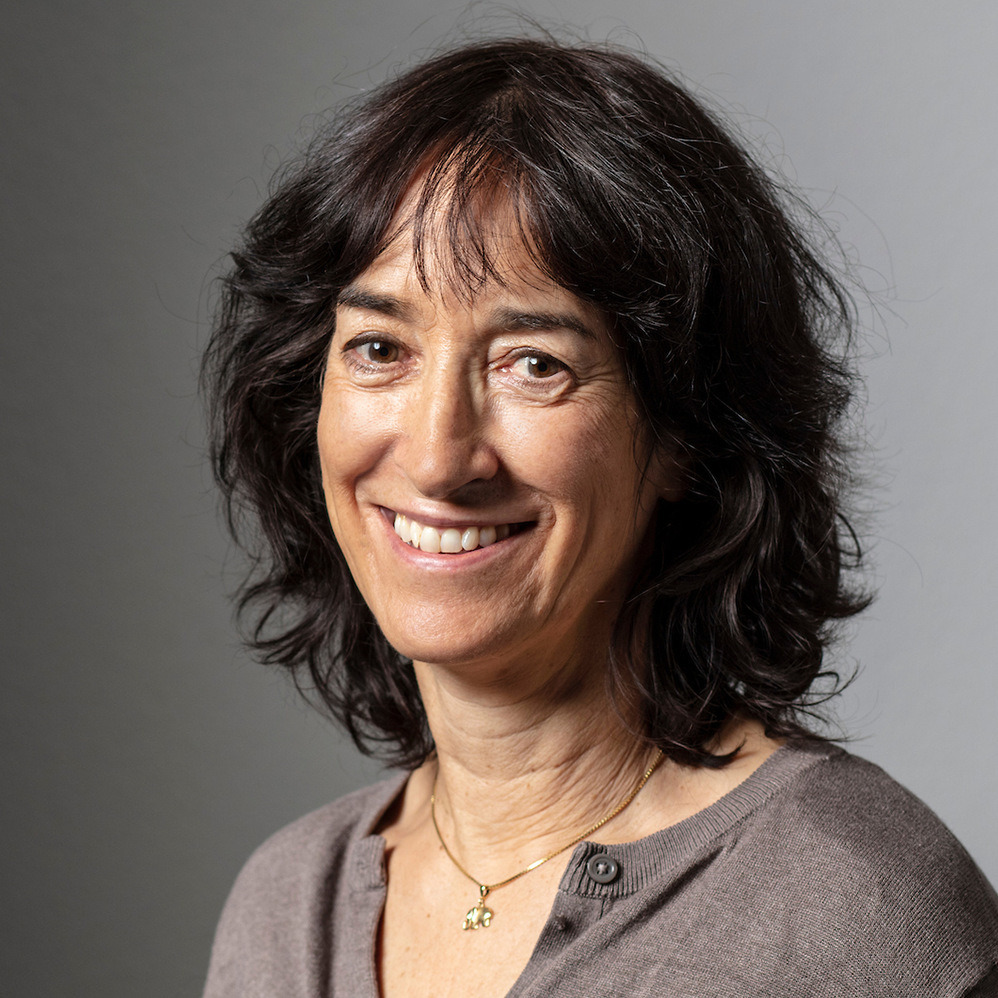
Swiss start-up Destinus enters hypersonic flight race, powered by hydrogen

It’s 20 years since Concorde made its final commercial flight, ending the first era of supersonic travel. A Swiss start-up is part of a new generation of aviation pioneers trying to re-introduce high-speed travel using clean hydrogen. But the road ahead is long and expensive.
The goal is ambitious: to develop a 400-passenger hypersonic aircraft that can take you anywhere on earth within half a day.
“A direct flight from London to Sydney would take four hours, and we plan for this to happen in the 2040s,” says Martina Löfqvist, head of business development at the aerospace start-up Destinus.
Destinus was founded in 2021 in Payerne, western Switzerland, by Mikhail Kokorich, a Russian physicist, inventor and entrepreneur. Kokorich moved to Switzerland and started Destinus after founding and then resigning from the aerospace company Momentus in the United States (see infobox).

Destinus has joined the race to produce a new type of plane that is set to fly faster, soar higher and leave a smaller environmental footprint than conventional aircraft, and it’s opened its own hydrogen park to develop the technologies it needs to make this happen. Destinus employs 150 people at branches around Europe and expects the project to cost CHF1 billion ($1.1 billion).
But Aerospace expert Eric Tegler, writing for Forbes magazine, dubs Destinus’s goals as similarly unrealistic to those of its competition. “Its timeline, core mission and path to profitability shift every year, putting it on a trajectory as hyperbolic as hypersonic,” he wrote in February.
We recently visited the new 1,200-square-metre Destinus Hydrogen Park in Payerne, billed as “the first private test site in Switzerland to develop hydrogen technologies for transport and energy”, to take the pulse of the project and understand the challenges for hydrogen-fuelled planes. Several of those challenges – including sourcing hydrogen – are outlined in the video below.
Why power hypersonic planes with hydrogen?
At the park’s ground-breaking ceremony, Destinus showed off its supersonic prototype, Destinus-3. It is ten metres long, has a wingspan of 3.5 metres and is a hybrid between an airplane and a rocket, taking off and landing horizontally from airports using a hydrogen-fed jet engine. The idea is that once it reaches a certain altitude and speed, the plane will switch to a “ramjet” engine, where superheated air is taken in through a duct, mixed with fuel and ignited. That will accelerate it to Mach five, a hypersonic velocity.

Although commercial aviation produces only 2.5% of global greenhouse gas emissions, it has a big climate impact because of flying at high altitudes. Many other hypersonic airplane models in development burn traditional jet fuel and have a large carbon footprint. Hydrogen would be a cleaner alternative fuel because its combustion emits no greenhouse gases.
Hydrogen is a zero-carbon fuel and can be used as a battery to store renewable energy. The challenge is to be able to extract it profitably from underground or to produce it from renewable sources, in large quantities and at an acceptable cost. Hydrogen is also among the major themes at the United Nations climate change conference in Dubai (COP28External link) from November 20-December 12. This article is part of a series exploring the potential and limitations of hydrogen and the role of science and industry in the search for the green fuel of the future.
But the creation of hydrogen fuel is not without carbon emissions because most hydrogen is made by burning fossil fuels. Only when clean energies are used to produce it by water electrolysis can it be called green hydrogen – the only type of truly emission-free hydrogen fuel.

+White hydrogen – Switzerland joins the scramble for ‘clean oil’ External link
Löfqvist says Destinus aims to use green hydrogen in its planes, “but this is not widely available right now and it’s quite expensive. So, in the short term, while we’re developing and testing systems, we will purchase the hydrogen that is easily available and at a lower price”.
Green hydrogen costs around CHF24-28 ($27-31) per kilo while the cheaper, readily available hydrogen costs about CHF18 per kilo. A kilogram of jet fuel costs around $1. The high cost of hydrogen is a considerable obstacle to hypersonic hydrogen-fuelled flights.
In the future the company will use liquid hydrogen instead of gas, because it can store a lot of energy in a small amount of mass. However, it takes up four times more volume on an aircraft than jet fuel, posing a challenge for the plane’s design.
The main suppliers of liquid hydrogen are in France and Germany, requiring Destinus to transport it to Switzerland. “But it’s also possible that we will get gaseous hydrogen and then liquefy it ourselves,” Löfqvist adds.
+ Once a hydrogen vehicle pioneer, Switzerland lags in the green fuel race

Support from Spain
Destinus is building another test facility near Madrid to develop its engines and received grants for two projects worth €26.7 million (CHF 29.48 million) from the Spanish government to help expand its hydrogen propulsion capabilities.
Destinus has raised about CHF65 million in funding so far, a long way from the “billion Swiss francs” the company says it will need to build a commercial hydrogen-powered hypersonic airplane.
Plane design and sonic boom are challenges
Destinus must design its planes for flight at speeds greater than Mach five (about 6,116km/h or 3,800mph). The aircraft will have a blended “body wave rider” shape with no clear dividing line between the wings and the main body of the aircraft. This design could make the aircraft less stable at low speeds, a challenge that Destinus must overcome.
Then there’s the heat: the nose cone and wings can reach temperatures above 1,000°C while travelling at five times the speed of sound. When chilled to a liquid at -253°C, hydrogen can be used to help to pre-cool the air for the engine and cool the airframe.
Noisy sonic booms were a drawback for Concorde and must also be considered by Destinus. The boom happens when you fly above the speed of sound, at supersonic or hypersonic velocities. During supersonic and hypersonic cruise, Destinus plans to fly above unpopulated areas, such as seas or deserts, to avoid breaking noise regulations. The Destinus developers say their planes will be quiet enough to operate from standard airports for take-off and landing.

And, as with Concorde, there are rules governing the maximum g-forces that a passenger experiences during acceleration, which Destinus will have to observe.
Founders outline ambitious timetable
“Destinus-3 will fly with a kerosene-fuelled turbojet engine for the first time at the end of 2024,” says project founder Kokorich. “In 2025 we will add a hydrogen-powered afterburner to reach supersonic velocities.”

Destinus’s first commercial plane will not be manned, but Kokorich says they could use the same engines to build a plane for 25 people. Löfqvist adds: “It could fly from, say, London to New York in one-and-a-half hours. So it’s going to be Concorde, but a bit faster and run entirely on hydrogen.”
+Once a hydrogen vehicle pioneer, Switzerland lags in the green fuel race
Hypersonic competition in the United States
Destinus faces stiff competition from a handful of start-ups working on hypersonic flight. The main challengers are Hermeus and Boom Supersonic in the United States.
Hermeus is testing a new type of engine for the US Air Force that it says will eventually reach Mach five. In 2022 it announced a $100 million (CHF91 million) funding round to develop its first prototype aircraft. Its fundraising is led by venture capitalist Sam Altman, CEO of OpenAI. Hermeus will run on conventional jet fuel.
The other big competitor, Boom Supersonic, will use sustainable aviation fuel in its Overture jet, but it will not be able to match Destinus’s aimed-for speeds. Boom aims to roll Overture out in 2026, with the first flight planned for 2027. In November, Boom announced it had increased its total funding to more than $700 million.
United Airlines has announced that it will purchase 15 Overture models, External linkscheduled to join United’s fleet no earlier than 2029.

Are Destinus’s plans viable?
Hansjörg Bürgi, editor-in-chief of the Swiss aviation magazine Skynews.ch, says that “it will take years, if not decades, of testing before paying passengers can fly on them for the first time, that’s my guess”.
Aviation specialists agree that many hydrogen storage, supply chain and infrastructure challenges have to be overcome before hydrogen-powered aircraft can become a reality in passenger transport, a process that would at best take decades.
That doesn’t stop scientists and entrepreneurs like Mikhail Kokorich from dreaming big. “It’s a marathon and not a sprint,” he says. “Our focus now is on generating revenues to continue funding our bold vision.”
Edited by Veronica DeVore
Destinus founder Mikhail Kokorich
In 2011 Mikhail Kokorich founded Russia’s first private space company, Dauria. Kokorich moved to the US in 2014 and sought asylum – which he never received – because of his involvement with a Russian opposition movement. He set up Momentus, focused on developing spacecraft to clean up space junk.
In July 2021 he and the company were charged with misleading investors about its propulsion technology and downplaying regulators’ national security concerns. Kokorich denied hiding key facts about his work, resigned and moved to Switzerland.
In 2021 he set up Destinus to build hypersonic planes and develop hydrogen technologies.

In compliance with the JTI standards
More: SWI swissinfo.ch certified by the Journalism Trust Initiative




























You can find an overview of ongoing debates with our journalists here . Please join us!
If you want to start a conversation about a topic raised in this article or want to report factual errors, email us at english@swissinfo.ch.